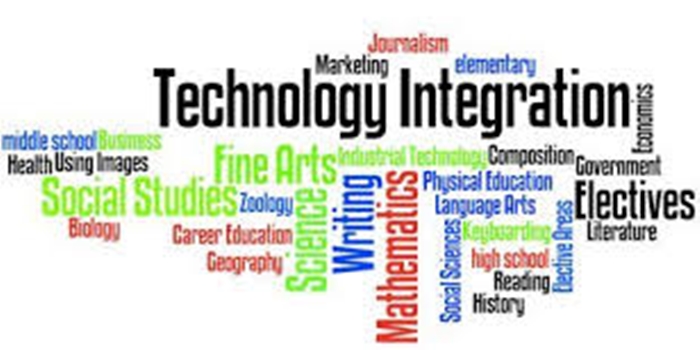In this article, we discussed the meaning of technology integration, the types, the examples, the stages, we also outlined the benefit.
Definition
Technology integration is defined as the use of technology to enhance and support the educational environment. Technology integration in the classroom can also support classroom instruction by creating opportunities for students to complete assignments on the computer rather than with normal pencil and paper.
Technology integration is the use of technology to improve work, learning, and communication.
Using software to organize tasks
Sharing files online
Using email and chat to communicate with coworkers
Using technology to get jobs done faster and more efficiently
In schools
Using computers and software to support instruction
Using the internet for research
Using network-based communication systems
Using technology to create opportunities for students to complete assignments
In product development
Choosing and refining technologies used in a new product, process, or service
Defining how the world of research interacts with manufacturing and product application
In education
Using technology to enhance learning in a content area or multidisciplinary setting
Using technology to help students obtain, analyze, synthesize, and present information
Technology integration is a process that involves continuous change, learning, and improvement.
Types of technology integration
Online learning: Using the internet to teach and learn
Project-based learning: Using technology to complete projects
Game-based learning: Using games to teach and assess learning
Mobile learning: Using mobile devices to learn
Collaborative learning: Using technology to work together on projects
Student-created media: Using technology to create podcasts, videos, or slideshows
Social media: Using social media to engage students
Technology integration models
Technology integration models are notional models that help teachers and researchers think about technology integration.
Examples of technology integration include:
Using online platforms for collaborative document editing (like Google Docs)
Incorporating interactive whiteboards in the classroom
Utilizing educational apps for learning activities
Creating presentations with digital slides
Using online research tools to access information
Conducting virtual field trips
Employing student response systems for quick assessments
leveraging social media for project sharing and discussion.
Students using tablets to access digital textbooks and interactive learning modules.
Teachers creating online quizzes and assessments through learning management systems.
Collaborative projects where students work on documents together online.
Using video conferencing tools for virtual guest speakers or distance learning.
Incorporating educational games to reinforce learning concepts.
Workplace applications:
Utilizing project management software to track tasks and deadlines
Using cloud-based storage to access files from multiple devices
Implementing video conferencing for remote meetings
Employing data analytics tools to monitor performance and identify trends
Specific tools and technologies:
Learning management systems (LMS)
Interactive whiteboards
Digital presentation software (PowerPoint, Google Slides)
Online collaboration platforms (Google Docs, Padlet)
Student response systems (clickers)
Virtual reality experiences
The stages of technology integration into education include
Explanation
Pre-integration: The initial stage of integrating technology
Transition: The stage of moving toward integrating technology
Development: The stage of developing the use of technology
Expansion: The stage of expanding the use of technology
Systemwide integration: The stage of integrating technology across an entire system
Technology integration is complex and involves many interconnected activities. It’s important to consider the relationship between instructional technology and pedagogical concepts.
Effective technology integration
Effective technology integration happens when students can: Use technology tools to find information, Analyze and synthesize information, and Present information professionally.
Professional development
Professional development for teachers is a key part of improving technology use in schools. Teachers’ attitudes and beliefs about teaching, learning, and technology impact how they approach technology adoption.
Technological Pedagogical Content Knowledge (TPACK)
TPACK is a framework that helps teachers focus on learning by integrating technology into their teaching.
Technology integration can be important for businesses and education.
Benefits for businesses
Efficiency
Technology can help businesses run more smoothly and cheaply by automating repetitive tasks.
Decision making
Technology can help businesses make better decisions by providing data and insights.
Security
Technology can help businesses develop security strategies for employees and protect against disasters.
Benefits for education
Personalized learning
Technology can help educators create content that’s tailored to students’ interests and needs.
Engagement
Technology can help students become more engaged in their learning by making lessons more fun and interactive.
Skill development
Technology can help students develop skills like research, communication, collaboration, critical thinking, and problem solving.
Accessibility
Technology can make lessons more accessible for students with disabilities and multilingual learners.
Social skills
Technology can help students develop social skills through collaborative tools and online platforms.
Conclusion
Technology integration is the use of technology to improve learning and work processes. In schools, it involves using technology in teaching and daily operations. In businesses, it’s using digital tools to improve efficiency and decision-making.
READ: Technological Challenges


